GPT-4 vs. GPT-3: What Does the New Model Have to Offer?

In Brief
OpenAI has announced the next version of the GPT language model, GPT-4, which is expected to have a larger number of parameters and be used for a variety of natural language processing tasks.
GPT-4 understands both text and visual information, making it a powerful tool for tasks such as image captioning, visual question answering, and content creation.
It has a good memory capacity of 64 thousand words, allowing it to generate more coherent and contextually relevant responses.
It is ready to answer questions in 26 languages, surpassing the English-language performance of GPT-3.5 and other LLMs in 24 of the 26 languages examined.
This new development in natural language processing will greatly benefit multilingual communication and accessibility.
As promised by Microsoft, on March 14, OpenAI officially presented the next version of the GPT language model, GPT-4, which is expected to have a significantly larger number of parameters than its predecessor GPT-3. This could potentially lead to more impressive language generation capabilities than ever before. Additionally, it is likely that GPT-4 will be used for a variety of natural language processing tasks, such as chats and text completion.
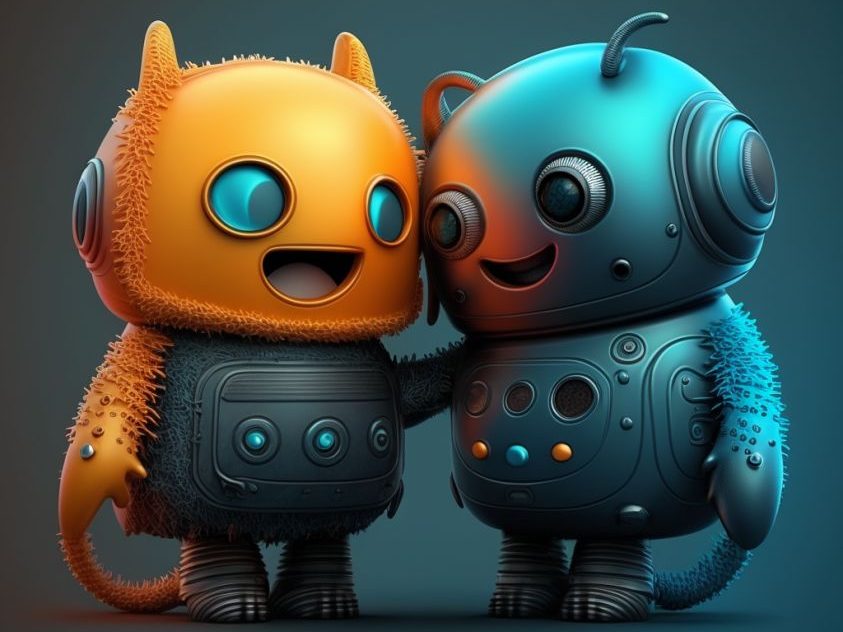
| Read more: How to Use ChatGPT (GPT-4) for Free Forever |
GPT-4 understands not only text but also visual information, although it hasn’t branched out to video just yet. A GPT-4 model can tell what exactly is depicted in the illustration and even explain its meaning. In the demo, GPT-4 explained the visual joke where an ancient VGA cable is connected to the iPhone and also told what can be cooked from the ingredients shown in the picture. This ability to understand and interpret visual information makes GPT-4 a powerful tool for tasks such as image captioning, visual question answering, and even content creation. With the integration of both text and visual understanding, GPT-4 has the potential to revolutionize various industries such as advertising, design, and e-commerce.
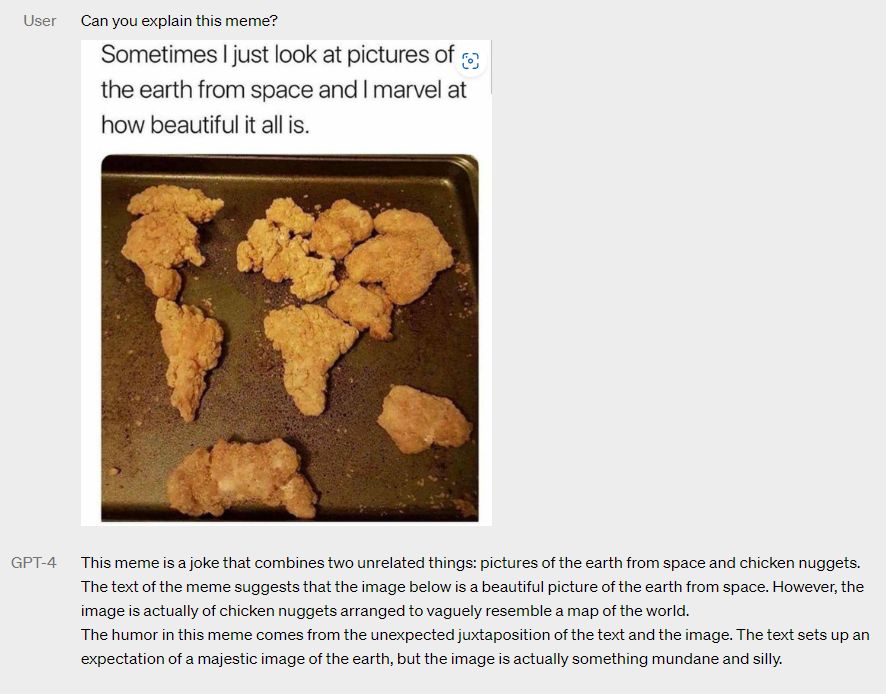
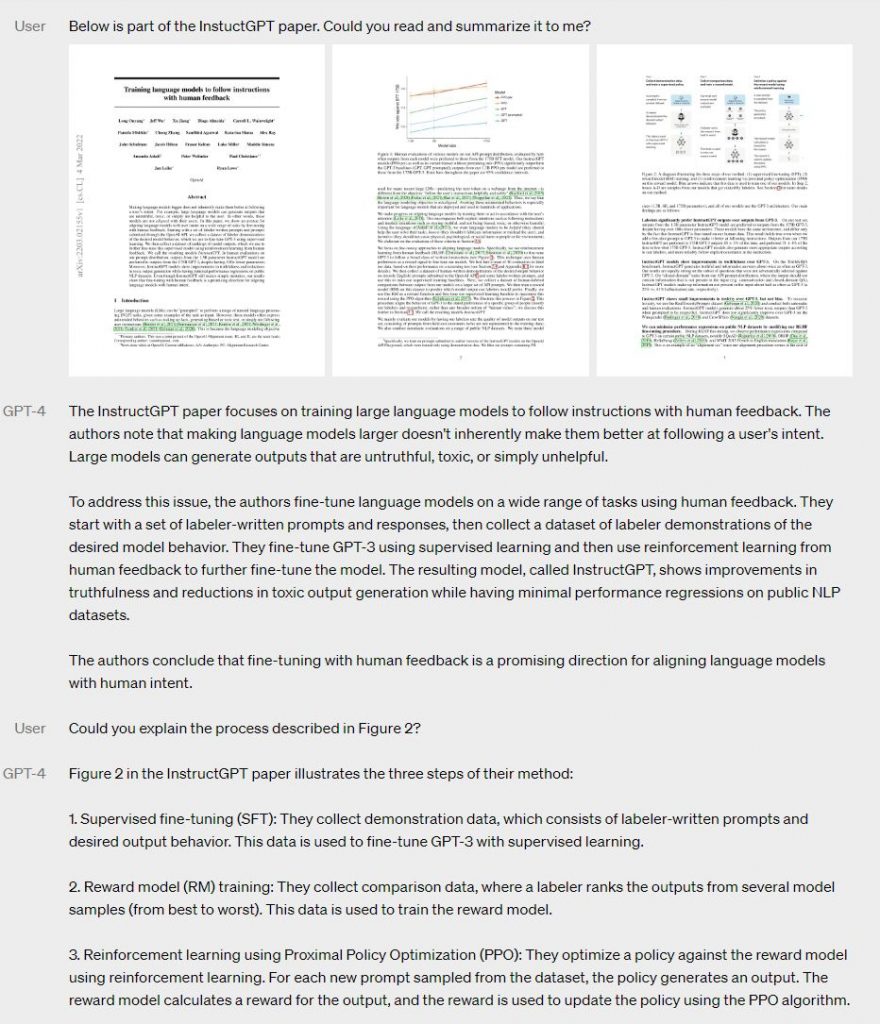

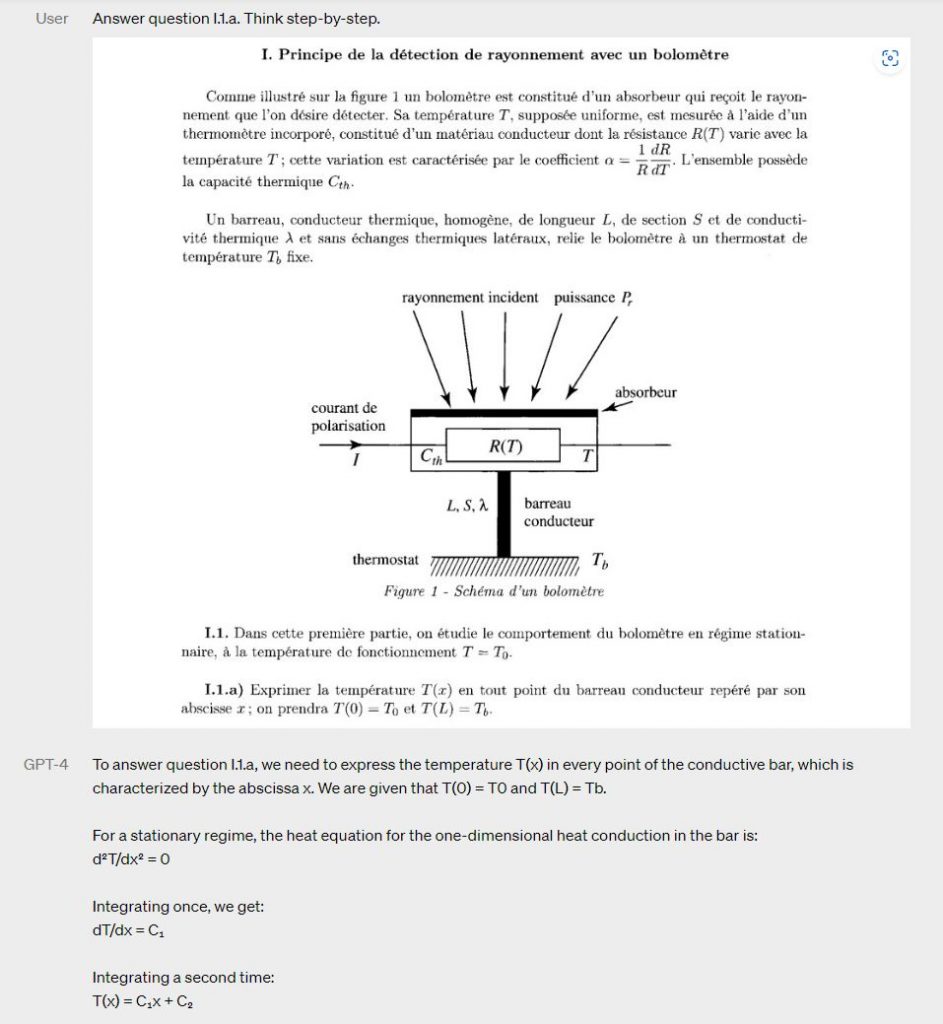
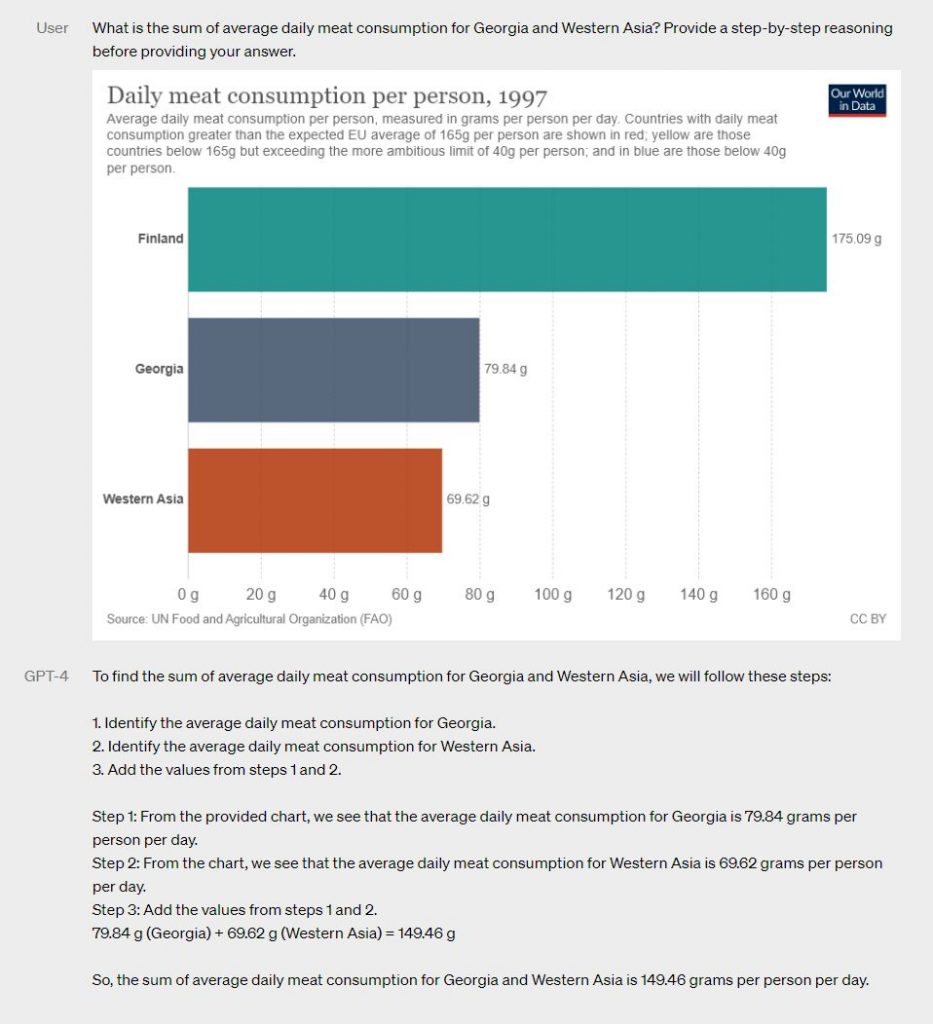

GPT-4 has a good memory. If the previous version could remember 8,000 words, GPT-4 will easily remember 25,000 words (so approximately the length of “The Old Man and the Sea” by Ernest Hemingway). OpenAI announced a super version of AI that remembers about 64,000 words (that’s approximately the length of C.S. Lewis’s “The Magician’s Nephew” or Aldous Huxley’s “Brave New World”). This will allow the model to return to topics discussed at the start of a lengthy conversation as it will be able to remember things written half an hour prior. This increased memory capacity will enable GPT-4 to generate more coherent and contextually relevant responses, making it a valuable tool for natural language processing tasks. Additionally, the ability to recall previously-discussed topics will enhance its ability to engage in more complex and meaningful conversations with humans.
GPT-4 is ready to answer questions in 26 languages. GPT-4 exceeds the English-language performance of GPT-3.5 and other LLMs (Chinchilla, PaLM) in 24 of the 26 languages examined, including low-resource languages like Latvian, Welsh, and Swahili. This new development in natural language processing will greatly benefit multilingual communication and accessibility. It is a significant step towards bridging the language barrier in various fields such as education, healthcare, and business.
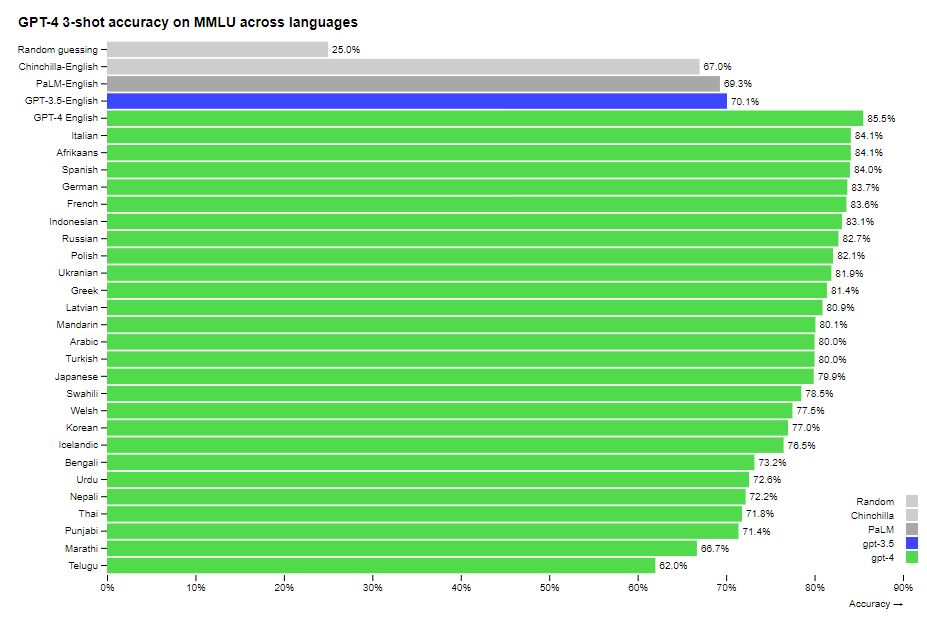
GPT-4 won’t get annoyed as easily, so it is unlikely it will begin to threaten, insult, or just talk nonsense. In order to achieve this, it was trained on a huge number of “malicious” text prompts. The training data for GPT-4 includes various types of malicious text prompts, such as hate speech, cyberbullying, and trolling. This will help the model recognize and avoid generating such harmful content in its responses.
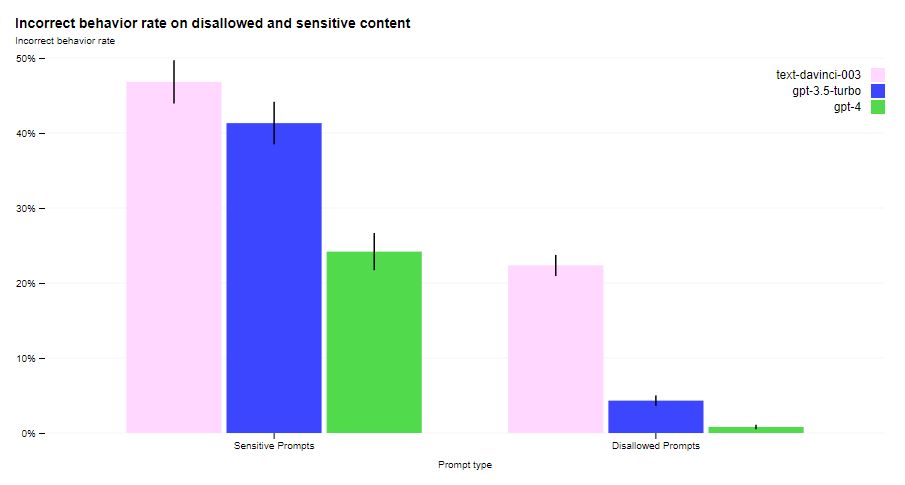
GPT-4 has passed over 20 of the most common knowledge tests, including math, physics, and chemistry. In some cases, the model performed better than 88% of those tested. This achievement shows that GPT-4 has the potential to be a game-changer in fields such as education, research, and customer service. However, further testing and development are needed before it can be fully integrated into these areas.
GPT-4 is already being tested by several large companies, including the Stripe payment service. OpenAI also admitted that the updated Bing search engine from Microsoft has already worked on the new version of GPT. Furthermore, the company refused to discuss the technical characteristics of the GPT-4 in detail in order to avoid disclosing unnecessary information to competitors.
GPT-4 is still not perfect: Its knowledge is limited to September 2021, and in some cases, the AI “hallucinates”—it gives out incorrect or simply fictitious information. Now that the model is available only to subscribers of the paid ChatGPT Plus service, developers can put it on the API waiting list. The free version has not yet been announced.
The main differences between GPT-4 and GPT-3
- GPT-4 produces fewer actual and other errors, which has been verified in various tests. In particular, GPT-4 was among the top 10% of examinees when passing the standard exam for a lawyer’s license in the United States. By comparison, CPT-3 was in the bottom 10%.
- The new model can create and edit texts—including songs, plays, etc.—on a level closer to that of a human. It is also able to adopt the author’s style or imitate another one at the request of the user.
- The model can recognize illustrations and interact with them—for example, suggest recipes using the products shown in the picture. Another use is to describe the environment for visually impaired people. To this end, Open AI has already partnered with a dedicated application called Be My Eyes.
- GPT-4 can handle more than 25,000 words at a time (in the previous version, 8,000 words), which makes it possible to create or process large amounts of text.
- The model has become more multilingual. It still works best in English, but it can create texts in another 25 languages (including Italian, Ukrainian, and Korean) with fairly high accuracy.
- GPT-4 is available in the paid version of the ChatGPT Plus chat and through the API, the company is actively monetizing its development. Duolingo, Stripe, Morgan Stanley, Khan Academy, and the Icelandic government already use the model for their needs. Recently, one of the largest US software companies, Salesforce.
Read more about GPT models:
Disclaimer
In line with the Trust Project guidelines, please note that the information provided on this page is not intended to be and should not be interpreted as legal, tax, investment, financial, or any other form of advice. It is important to only invest what you can afford to lose and to seek independent financial advice if you have any doubts. For further information, we suggest referring to the terms and conditions as well as the help and support pages provided by the issuer or advertiser. MetaversePost is committed to accurate, unbiased reporting, but market conditions are subject to change without notice.
About The Author
Damir is the team leader, product manager, and editor at Metaverse Post, covering topics such as AI/ML, AGI, LLMs, Metaverse, and Web3-related fields. His articles attract a massive audience of over a million users every month. He appears to be an expert with 10 years of experience in SEO and digital marketing. Damir has been mentioned in Mashable, Wired, Cointelegraph, The New Yorker, Inside.com, Entrepreneur, BeInCrypto, and other publications. He travels between the UAE, Turkey, Russia, and the CIS as a digital nomad. Damir earned a bachelor's degree in physics, which he believes has given him the critical thinking skills needed to be successful in the ever-changing landscape of the internet.
More articles

Damir is the team leader, product manager, and editor at Metaverse Post, covering topics such as AI/ML, AGI, LLMs, Metaverse, and Web3-related fields. His articles attract a massive audience of over a million users every month. He appears to be an expert with 10 years of experience in SEO and digital marketing. Damir has been mentioned in Mashable, Wired, Cointelegraph, The New Yorker, Inside.com, Entrepreneur, BeInCrypto, and other publications. He travels between the UAE, Turkey, Russia, and the CIS as a digital nomad. Damir earned a bachelor's degree in physics, which he believes has given him the critical thinking skills needed to be successful in the ever-changing landscape of the internet.













